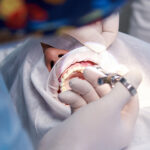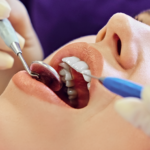Sinus lift surgery, also known as sinus augmentation, is a specialized maxillofacial procedure performed by oral surgeons in the field of implant dentistry. It is usually done to create enough space in the upper jawbone for dental implants. This procedure involves adding bone graft material to the sinus floor, which is the wall that separates the sinus cavity from the jawbone. While sinus lift surgery is generally safe and effective, sinus lift surgery swelling is a common side effect that patients may experience during the recovery period.
Understanding Sinus Lift Surgery
Before we delve into the details of swelling after sinus lift surgery, let’s briefly understand how the procedure works. Sinus lift surgery is typically conducted in cases where the upper jawbone has insufficient bone height to support dental implants. This can occur due to various reasons such as tooth loss, periodontal disease, or a congenital condition.
During the surgery, the oral surgeon creates an incision in the gum tissue, exposing the underlying jawbone. A small window is then created in the bone to access the sinus membrane. The membrane is gently lifted, and a bone graft material is placed in the space beneath it. The graft material can be derived from the patient’s own bone (autogenous graft), a donated bone (allogeneic graft), or a synthetic substitute (alloplastic graft). Once the graft material is in place, the gum tissue is sutured back into position, and the healing process begins.
Causes of Swelling after Sinus Lift Surgery
Swelling is a normal physiological response to any surgical procedure, including sinus lift surgery. It occurs as a natural part of the body’s healing process. The extent and duration of swelling can vary from patient to patient, and several underlying factors may contribute to its development. These include:
- Inflammation: Sinus lift surgery involves manipulating the sinus membrane, which can lead to inflammation. Inflammatory cells rush to the site of injury, resulting in localized swelling.
- Hemorrhaging: The surgical site may experience some bleeding during the procedure, resulting in post-operative swelling.
- Trauma to surrounding tissues: The manipulation of the sinus membrane and underlying bone can cause trauma to the surrounding soft tissues, leading to localized swelling.
- Individual patient factors: Factors such as age, overall health, and the body’s ability to heal can influence the extent and duration of swelling.
Managing Sinus Lift Surgery Swelling
While swelling after sinus lift surgery is normal, proper management can help minimize discomfort and aid in a quicker recovery. Here are some tips and precautions to consider:
- Cold Compresses: Applying cold compresses to the affected area can help reduce swelling and provide temporary relief. Ice packs or frozen gel packs wrapped in a thin cloth should be applied to the outer cheek area for 15-20 minutes at a time, with breaks in between. This should be done as soon as possible after the surgery and continued for the first 24-48 hours.
- Medication: Pain and swelling after sinus lift surgery can be managed with over-the-counter nonsteroidal anti-inflammatory drugs (NSAIDs) such as ibuprofen or prescription pain medications as prescribed by the oral surgeon. These medications help reduce inflammation and alleviate discomfort. It is essential to follow the recommended dosage and guidelines provided by the healthcare professional.
- Oral Hygiene: Maintaining proper oral hygiene is crucial during the recovery period. Gentle rinsing with a warm saltwater solution or prescribed antimicrobial mouthwash should be done starting from the day after surgery to promote healing and prevent infection. However, avoid forceful spitting or swishing to prevent dislodging the blood clot or graft material.
- Rest and Elevation: Resting and keeping the head elevated can help reduce swelling. It is recommended to sleep with extra pillows to keep the head elevated for the first few days after surgery. This position helps minimize fluid accumulation in the surgical area and facilitates the healing process.
- Prohibited Activities: To promote optimal healing and prevent complications, patients should avoid strenuous activities, vigorous exercise, heavy lifting, and blowing their noses forcefully for at least one week after surgery. These activities can increase blood flow to the surgical site, exacerbating swelling and potentially leading to complications.
- Follow-Up Appointments: Regular follow-up appointments with the oral surgeon are essential throughout the recovery period. The surgeon will monitor the healing process, remove any sutures, and provide further instructions for care. Any concerns or questions should be addressed during these visits.
Recovery Timeline
The duration of swelling after sinus lift surgery varies among patients. Generally, mild to moderate swelling can be expected for the first 48-72 hours after surgery, gradually improving thereafter. Complete resolution of swelling may take up to several weeks depending on individual factors and the extent of the procedure. The oral surgeon will provide specific guidelines regarding the anticipated recovery timeline.
Swelling is common after sinus lift surgery and can be managed for a smoother recovery. Follow post-op instructions and attend follow-up appointments for successful bone regeneration and a beautiful smile with dental implants.
Experience a smoother recovery after sinus lift surgery! Schedule your consultation at Madison Dentistry & Implant Center by calling 973-822-8003 today. Our team is here to support you every step of the way.




